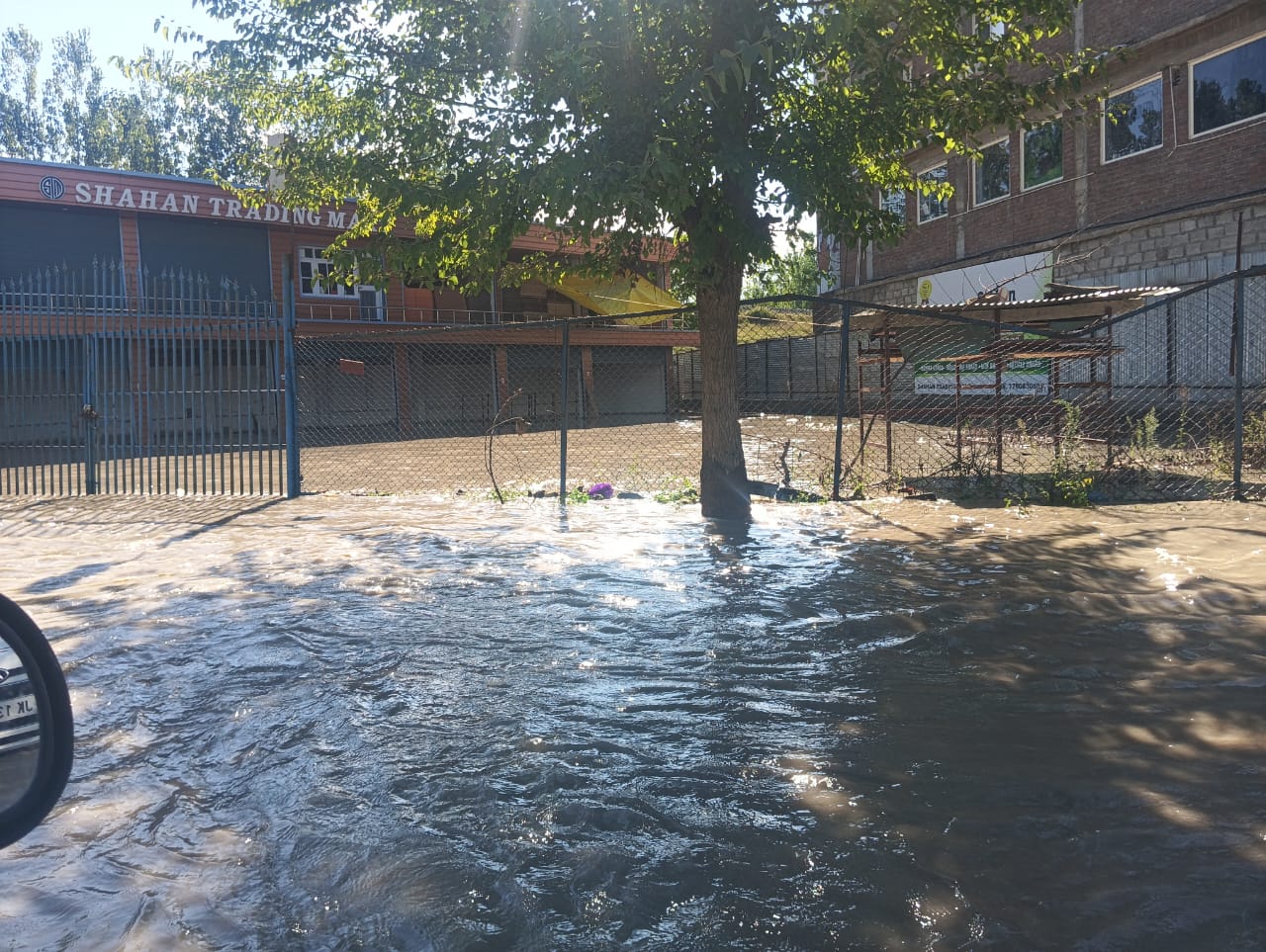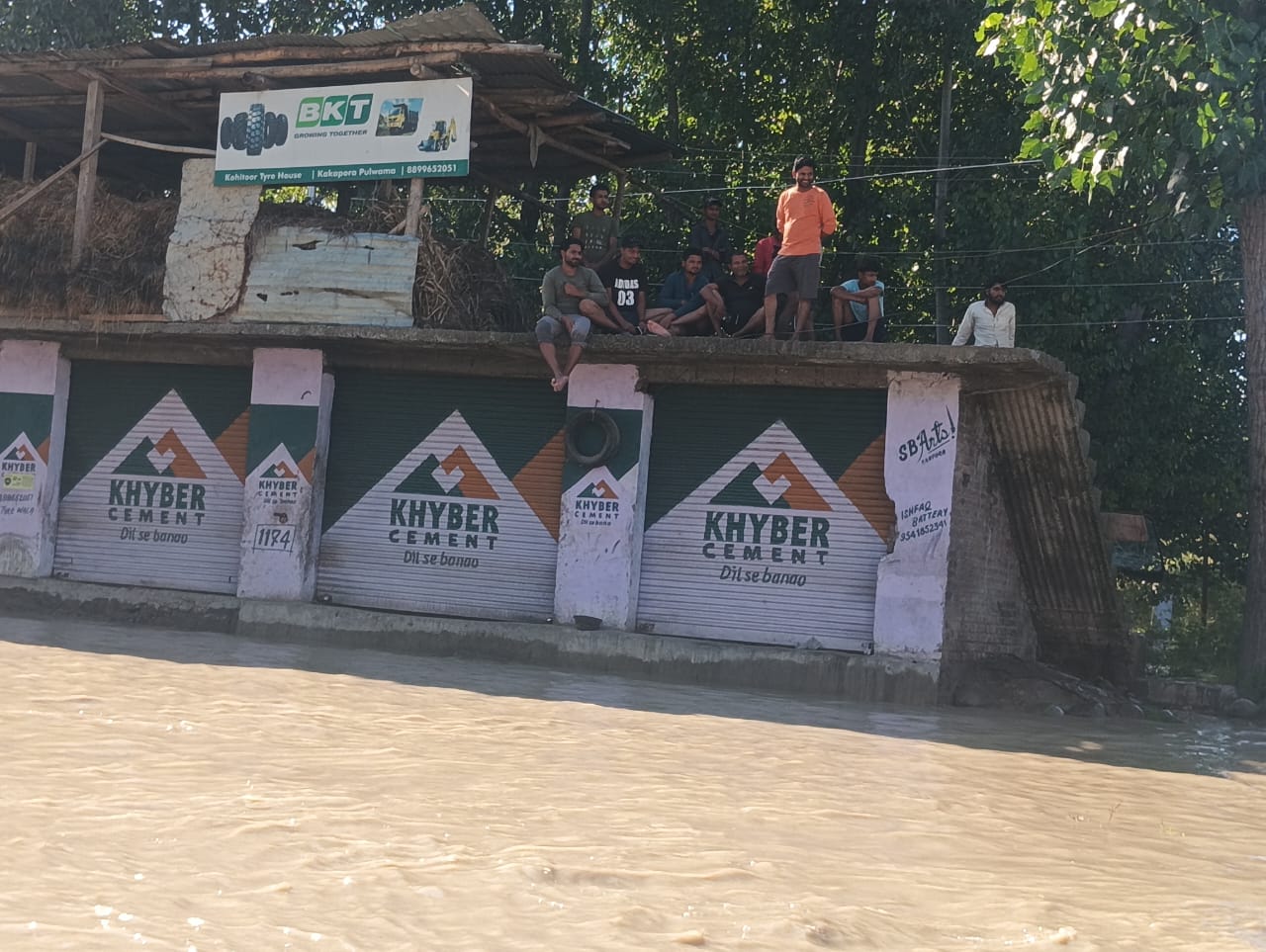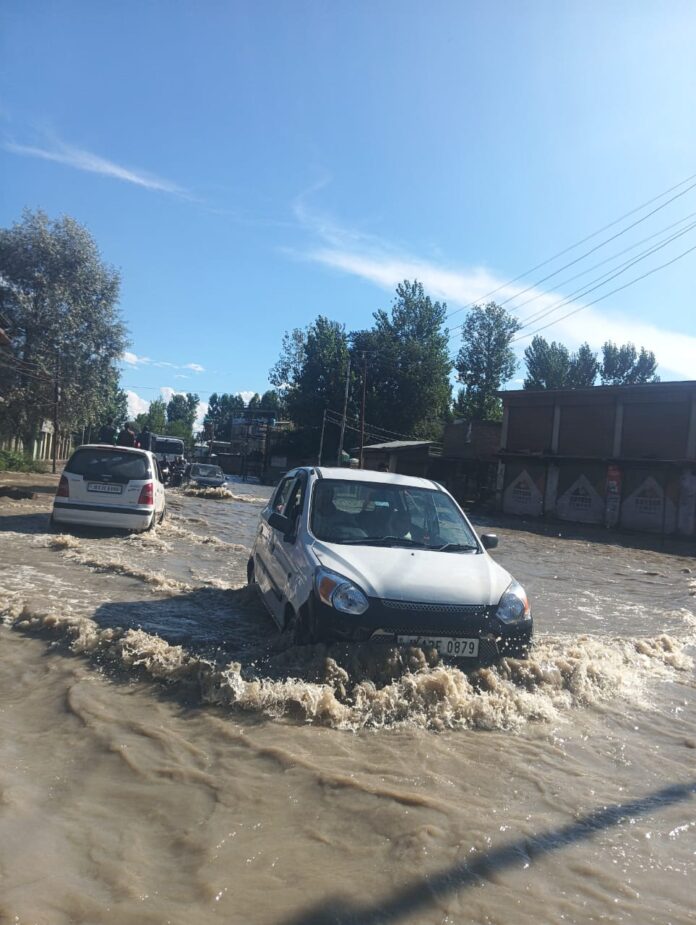By Arsheed Ahmad, twoCircles.net
Pulwama, Jammu and Kashmir — The floodwaters crept in silently, under the cover of night. No sirens, no alerts — only the growing roar of rivers breaking their bounds, of bunds collapsing, and of memories from 2014 coming back with haunting clarity. As torrential rains lashed the region in early September, large swathes of Kashmir and parts of Jammu were once again underwater.
In Pulwama’s Kakapora, the first signs of danger arrived not as warnings, but as the rumble of the Rumshi Nallah, which burst its banks in the early hours of September 3. Haji Noor Mohammad Lone stood by his window and watched helplessly as floodwaters consumed his fields and then his home.
“Our vegetable crops are destroyed,” he said. “A year’s worth of hard work has been wiped out.”
Kakapora, a link between Srinagar and Pulwama, remains half submerged, along with neighboring areas like Pahoo. The floodwaters lie still over rice fields and orchards, shimmering in the daylight but hiding a trail of destruction beneath their surface.
A Growing Crisis
As southern Kashmir struggled with flash floods, the Jhelum River — Kashmir’s main waterway, breached its banks in Budgam. A critical breach at Shalina triggered an urgent evacuation advisory for several low lying areas on September 4.
The Srinagar District Administration activated emergency alerts for Lasjan, Soiteng, Nowgam, Vyethpora, Golpora, Padshahibagh, and Mehjoornagar. Relief centers were set up, and nodal officers were assigned for coordination. Information was quickly disseminated through Masjids, local committees, police, and revenue officers to ensure it reached even those without digital access.
“District Administration Srinagar has reported a breach at Shalina in Budgam,” said an official. “As a precautionary measure, residents of vulnerable areas have been advised to evacuate.”
Though rainfall had ceased by early September 3, water levels remained high. By the morning of September 4, levels had begun to recede downstream, but the Jhelum still flowed above the danger mark at Sangam in south Kashmir and Ram Munshi Bagh in Srinagar.

Villages Drenched, Livelihoods Destroyed
Across Pulwama, stories of heartbreak echoed one another.
In Gundpora, carpenter Bilal Ahmad Shah lost his entire timber stock to the rising waters. “We managed to move some things upstairs, but many in single storey homes lost everything,” he said. “I appeal to the government for compensation.”
In nearby Taqibal, Lateef Ahmad Shah pointed to the broken remains of a protective bund that once shielded their land. “The floodwaters destroyed our apple orchards just days before harvest,” he said. “My friend had a high-density orchard spread over eight kanals — it’s all gone.”
Livestock, often the only asset families can rely on, was evacuated first. Essentials followed. Rescue teams from the State Disaster Response Force (SDRF), local police, and district officials coordinated efforts to evacuate stranded residents and provide assistance.
In Srinagar’s Habbakadal, Farida Bano, 55, handed out food in front of the Dastgeer Sahib shrine. “If the water had entered our homes again, it would’ve been a disaster,” she said. “We’re still recovering from what happened eleven years ago.”
Many residents acknowledged the administration’s quick response this time. Emergency shelters, timely alerts, and evacuation efforts were evident, but the scale of damage, particularly in rural areas, has once again exposed deep-rooted vulnerabilities in the region’s flood management systems.
Jammu: A Parallel Tragedy
While Kashmir battled rising waters, Jammu was already reeling from its own flood crisis.
On August 26, the Tawi River swelled dangerously, collapsing the historic Tawi Bridge a crucial connection for thousands in Jammu city. In Belicharna, Mashkoor Ahmad described the chaos as waters rushed into his neighborhood.
“Three houses in my area were swept away in hours. No rescue team came. We carried our cattle and belongings ourselves,” he said. “Now we’re living in schools or with relatives, struggling even to feed our livestock.”
Residents say around 20 houses have been damaged in the area, and relief is yet to reach many.
Earlier, in Kishtwar’s remote Chisoti village, tragedy had already struck. A suspected Glacial Lake Outburst Flood (GLOF) during a Hindu pilgrimage on August 6 triggered devastating flash floods. At least 65 people lost their lives, more than 100 were injured, and several are still missing.
The destruction was widespread: a makeshift market, a langar site, 16 homes, several government buildings, three temples, four water mills, a 30meter bridge, and more than a dozen vehicles were swept away in the deluge. Days later, another disaster struck Reasi district. A landslide, triggered by heavy rainfall and a cloudburst along the Vaishno Devi temple route, killed 34 people and injured 20 others. During his visit to flood hit areas, Chief Minister Omar Abdullah questioned the decision to allow the pilgrimage to continue despite warnings. The responsibility for the yatra lies under the Lieutenant Governor’s administration.
Days later, another disaster struck Reasi district. A landslide, triggered by heavy rainfall and a cloudburst along the Vaishno Devi temple route, killed 34 people and injured 20 others. During his visit to flood hit areas, Chief Minister Omar Abdullah questioned the decision to allow the pilgrimage to continue despite warnings. The responsibility for the yatra lies under the Lieutenant Governor’s administration.
Counting the Cost
As rescue teams continue their operations, the full scale of destruction is still being assessed. Early reports suggest extensive damage across homes, farmlands, public infrastructure, and roads, though official estimates are yet to be released.
In flood hit Kakapora, the anguish is visible in every corner. “This is a natural calamity,” said one resident. “No government can stop floods. But when we have nothing left, we expect support.”
In the agricultural heartlands, farmers are devastated. Paddy grower Abdul Rehman watched as his village fields were swallowed whole. “All our rice is gone. This was our only source of income,” he said. “We’ve lost everything.”
Beyond the visible destruction, collapsed bridges, broken homes, drowned markets — lies a deeper worry. With orchards ruined and harvests lost, families now face months of financial strain and food insecurity. For many, an entire year’s savings, hopes, and hard work vanished.


